All products featured are independently chosen by us. However, SoundGuys may receive a commission on orders placed through its retail links. See our ethics statement.
Best AirPods: Which of Apple's audio offerings is right for you?
Published onSeptember 27, 2024






Apple’s AirPods have become the go-to wireless earbuds for millions of users, especially since most North Americans are already immersed in the Apple ecosystem. Known for their instant pairing with Apple devices and a range of premium features—from active noise cancelation to spatial audio—AirPods stand out as a top choice for seamless audio experiences. But with multiple models now available, each with its own strengths, picking the right one isn’t as simple as it used to be, especially since they all look the same.
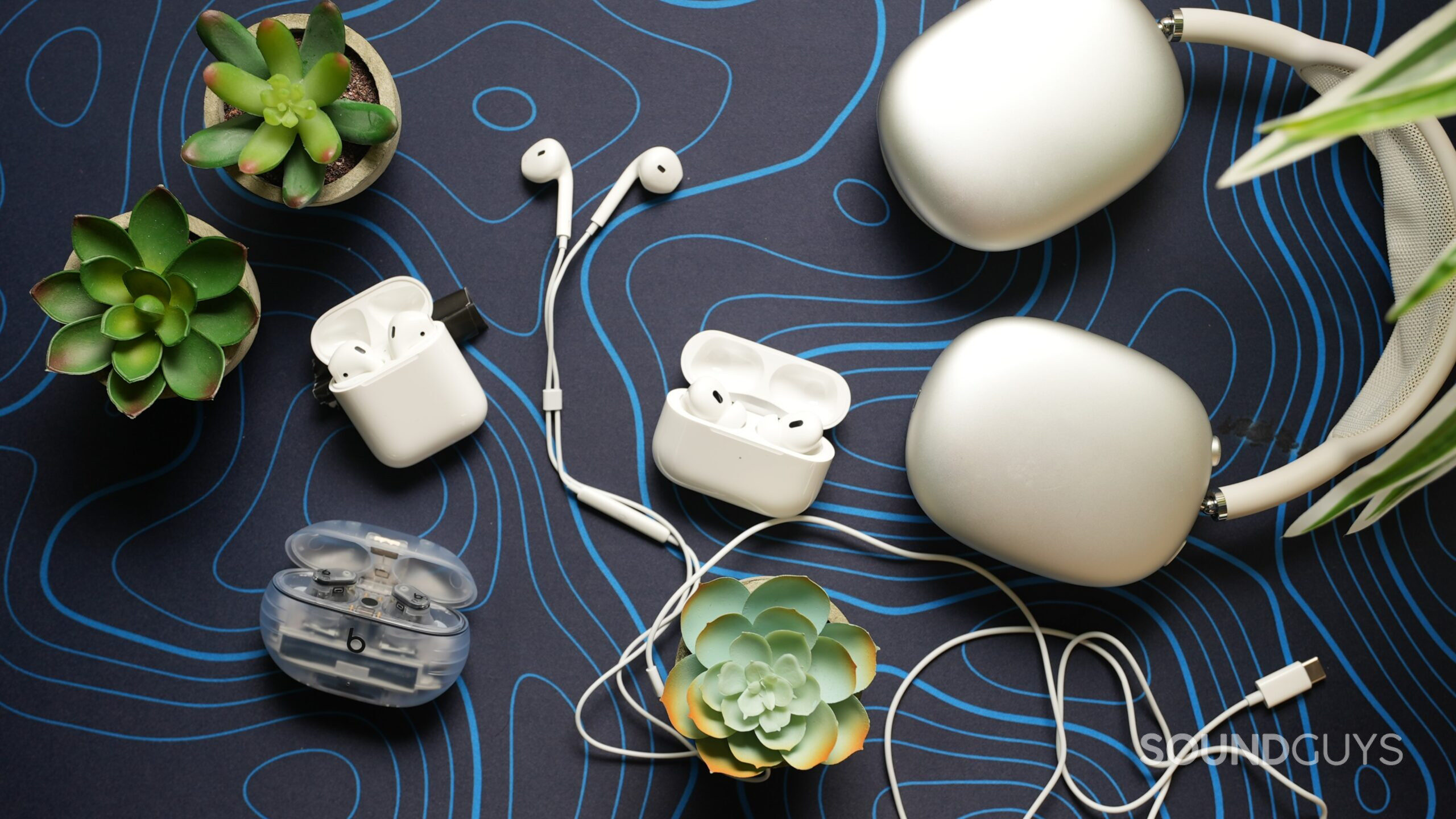
Whether you’re looking for superior sound quality, best-in-class noise cancelation, or a perfect balance of performance and price, this guide breaks down the best AirPods for every kind of listener. We’ll walk you through the AirPods lineup, comparing frequency response, noise attenuation, microphone quality, and battery life, all measured in our lab so you can confidently choose the model that fits your lifestyle. Prefer a non-Apple alternative? We’ll also highlight some strong contenders in the wireless earbud space that can offer comparable performance and value.
Editor’s note: this list was updated on September 27, 2024, to replace the AirPods 3 with the AirPods 4 as the best unsealed option. If you want the best of both worlds between unsealed earbuds and ANC, we recommend the AirPods 4 with ANC.
Best AirPods for most people: Apple AirPods Pro (2nd Gen)
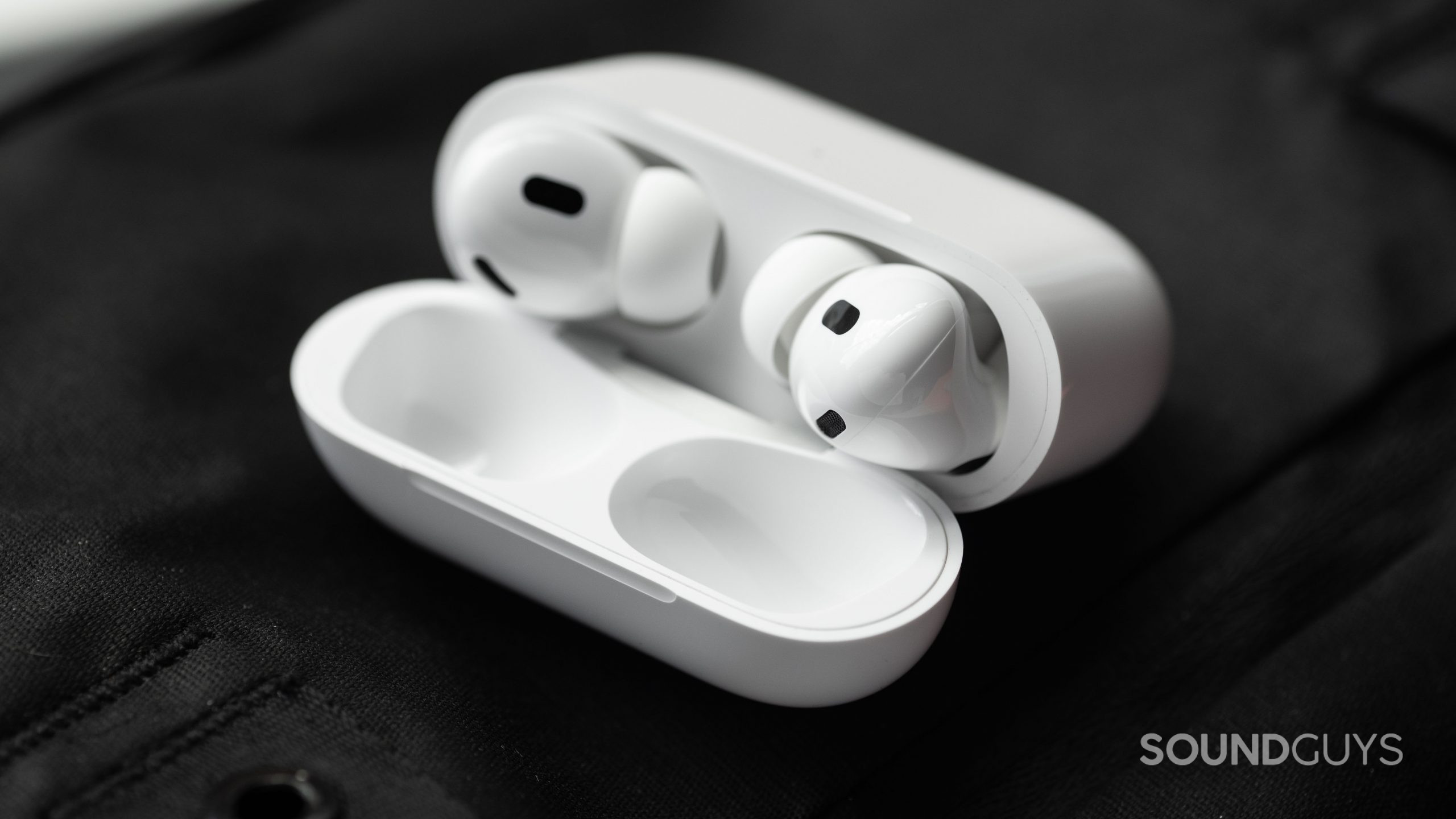
The Apple AirPods Pro (2nd Generation) improves upon its predecessor with upgraded noise cancelation, better battery life, and enhanced connectivity, all powered by the new H2 chip. The earbuds offer a comfortable fit with four ear tip options, while the IPX4-rated earbuds and case provide water resistance. With Spatial Audio personalization, Adaptive Transparency, and seamless integration within the Apple ecosystem, these earbuds are ideal for iPhone users seeking high-quality wireless audio.
While they look nearly identical to the first generation, the upgraded features make a compelling case for the AirPods Pro 2, especially with their improved noise canceling and the ability to track the case via the Find My app. However, Android users may miss out on many of these features, and customization options are limited without third-party apps.
Reasons to Buy:
- Excellent active noise canceling and Adaptive Transparency modes
- Seamless Apple ecosystem integration with Spatial Audio and Find My support
- Improved battery life and wireless charging options (MagSafe, Apple Watch, USB-C)
- IPX4 water resistance for both earbuds and case
- Comfortable fit with multiple ear tip sizes
Reasons Not to Buy:
- Most features are exclusive to Apple devices
- No customizable EQ without third-party apps
- The design is prone to snagging during workouts or with long hair
Be aware that the latest version of the AirPods Pro 2 now uses a USB-C charging port, so if you are using an iPhone older than iPhone 15 or Apple devices that use Lightning cable (and you’re not planning to upgrade anytime soon), make sure to get the older version of the AirPods Pro 2. Apple no longer sells them directly, but you can find them for ($239 at Amazon).

Objective measurements
Loading chart ...
In short, the AirPods Pro (2nd Generation) sounds great and will make most music sound good. Through the bass and mids, the AirPods Pro (2nd gen) closely follows our headphone preference curve and only makes significant deviations above 8kHz. Most listeners won’t be too bothered by the relative under-emphasis (compared to our preference curve) in the uppermost octave. Upper harmonics may be harder to hear during particularly busy segments in your favorite tracks, but we prefer this to the alternative.
Loading chart ...
Though the isolation is nothing to write home about, the ANC will destroy between 20-30dB of outside noise, depending on the frequency. That’s a respectable result for ANC earbuds, and this product should be well suited for commutes, air travel, or casual listening in a noisy environment.
The microphone array sounds quite good under ideal conditions, but sound quality declines when background noise comes into play.
Apple AirPods Pro (2nd Generation) microphone demo (Ideal conditions):
Best unsealed AirPods: Apple AirPods 4
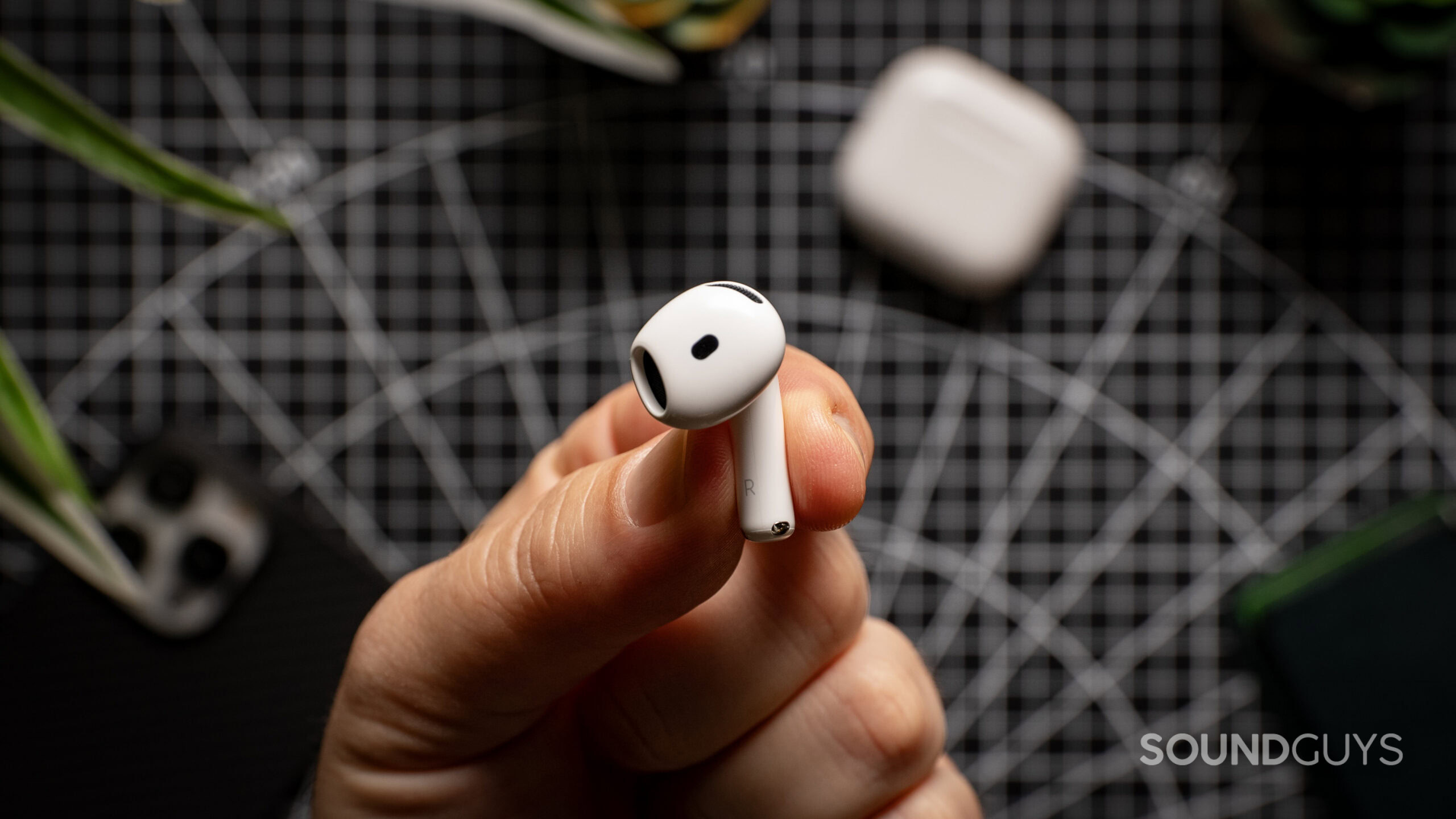
For those who prefer an open design, the Apple AirPods 4 offer a significant upgrade over their predecessors at a more affordable price point.
The Apple AirPods 4 boast a redesigned shape based on a large sample of ear scans, aiming to provide a more comfortable and secure fit for a wider range of users. The H2 chip enables enhanced Siri interactions and improved call quality, while Spatial Audio with head tracking creates an immersive listening experience.
The new USB-C charging case adds convenience, though wireless charging is reserved for the pricier ANC variant. Despite the open design, which sacrifices isolation, the AirPods 4 delivers good sound quality with Adaptive EQ and Personalized Volume. The IP54 rating offers improved dust and water resistance compared to previous generations.
Reasons to Buy:
- Improved fit and comfort for many users
- H2 chip for better performance and features
- Spatial Audio with head tracking
- Good sound quality with Adaptive EQ
- IP54 dust and water resistance
- More affordable starting price
Reasons Not to Buy:
- One-size-fits-all design may not suit all ears
- Limited sound isolation due to open design
- No ANC or Transparency mode
- Features are primarily beneficial for iOS users
- No wireless charging in the standard version

Objective measurements
Loading chart ...
The sound is characterized by a somewhat prominent bass bump around 100Hz, which helps the impression of low-end in the face of a rather steep rolloff. In our experience, there isn’t a whole ton of music content under 60Hz, so you shouldn’t have to worry about this much unless you’re a critical listener.
Loading chart ...
The standard AirPods 4 block out very little noise. If you frequently wear your earbuds in noisy environments, such as in a city or on a bus, you should not buy the AirPods 4. You are better off upgrading to the AirPods 4 with Active Noise Cancellation, or better yet, the AirPods Pro 2.
With the AAC-ELD speech codec, the AirPods 4 have improved call quality compared to previous generations. You can also now take group FaceTime calls with Personalized Spatial Audio for the AirPods 4, which makes it sound as though each voice is separate in space.
Apple AirPods 4 microphone demo (Ideal conditions):
Best (and only) headphones: Apple AirPods Max
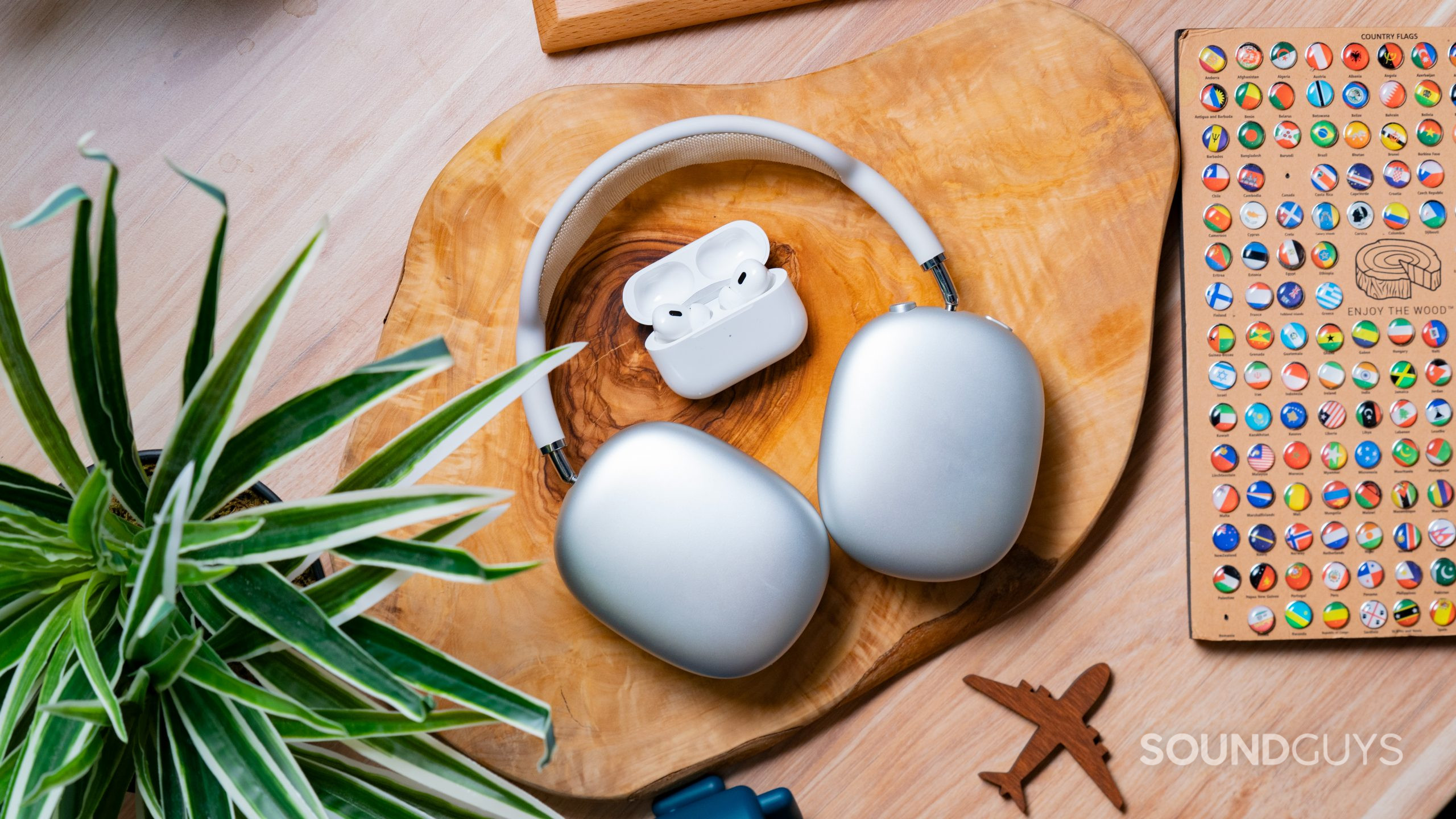
The Apple AirPods Max delivers exceptional active noise canceling (ANC) and sound quality, making it one of the best over-ear headphones available—particularly for users in the Apple ecosystem. Its luxurious build features sturdy materials like aluminum ear cups and a stainless steel headband, ensuring durability and comfort. The headphones offer a host of smart features like Spatial Audio and a smooth digital crown for volume control.
However, there are some notable downsides, such as the lack of a 3.5mm headphone jack, limited codec support, and a “smart” case that falls short of providing adequate protection. While the AirPods Max excels in many areas, it’s tailored for Apple users, and its premium price tag may be a hurdle for some. You can read more about whether the AirPods Max is worth it in 2024 or if you should wait for the inevitable AirPods Max 2 in our guides.
Reasons to Buy:
- Strong, active noise canceling
- Good build quality with comfortable ear pads
- Great sound quality
- Seamless integration with Apple devices, including auto-pause functionality
- Solid battery life (up to 21 hours) with ANC enabled
Reasons Not to Buy:
- No 3.5mm headphone jack
- Limited codec support (AAC and SBC only); no aptX or LDAC
- The “smart” case offers minimal protection and lacks practical functionality
- High price point for features that are less useful outside the Apple ecosystem


Objective measurements
Loading chart ...
The measured frequency response curve for the AirPods Max follows our headphone preference curve fairly closely, with a notably reduced emphasis in the upper midrange and little extra kick in the very low-frequency sub-bass region.
Loading chart ...
The active noise canceling on the AirPods Max is fantastic, achieving a peak of 47 dB of noise attenuation. They will reduce roughly 83% of perceived loudness from external noises.
Aside from the ideal setting, the ideal device to use the AirPods Max with appears to be an iPhone, as we had worse results using the headphones with non-Apple devices. Listen to the ideal below and check out more test results in our full review.
Apple AirPods Max microphone demo (ideal):
Best wired AirPods: Apple EarPods
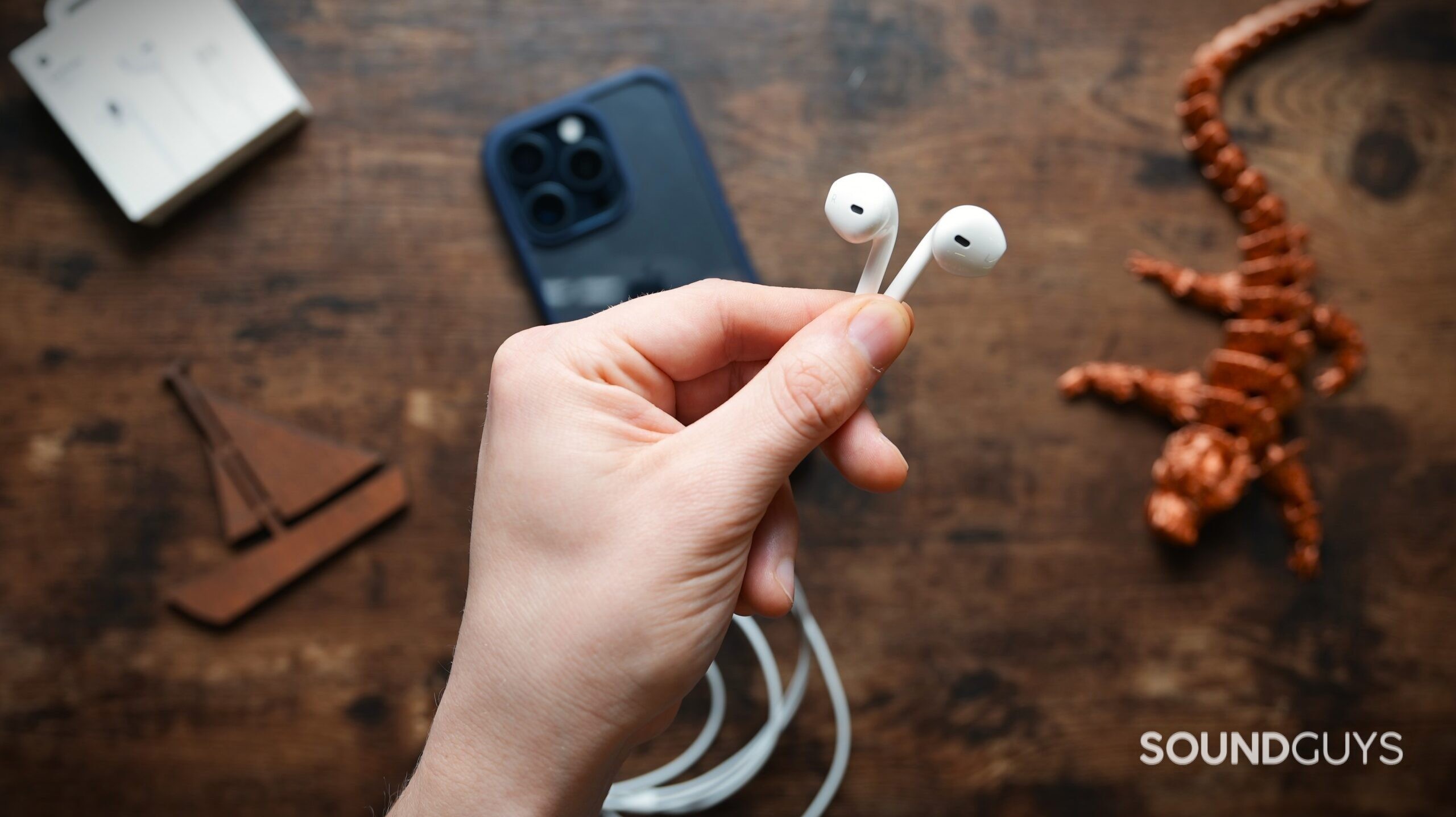
The Apple EarPods (USB-C) are a basic, no-frills option for those who just need a cheap pair of earbuds that get the job done. They maintain the same iconic design as previous generations but now come with a USB-C connector to be compatible with the latest iPhones. These earbuds are all about simplicity—plug them in, and they work, with no additional features like noise canceling or Spatial Audio. While they may suffice for casual listening or as a backup pair, they don’t offer much in terms of sound quality, comfort, or durability.
However, the affordable price of $19 makes them an attractive option for budget-conscious buyers. Be aware, though, that these earbuds do not provide noise isolation due to their unsealed design, but they do have very good microphone quality if taking calls on the go is important to you. If you’re looking for anything beyond the basics, you may want to consider spending a little more for better alternatives.
Reasons to Buy:
- Affordable price at $19
- Simple plug-and-play functionality with USB-C devices
- Familiar design for long-time Apple users
- Basic in-line controls for volume and playback
- Good microphone performance
Reasons Not to Buy:
- Poor sound quality with weak bass and limited isolation
- Fit issues due to unsealed design
- No additional features like noise canceling, water resistance, or Spatial Audio
- Won’t work with some non-Apple USB-C devices
If you have an older iPhone, you can also pick up the Lightning connector model for $16.59 at Amazon.

Best AirPods alternative: Beats Studio Buds Plus
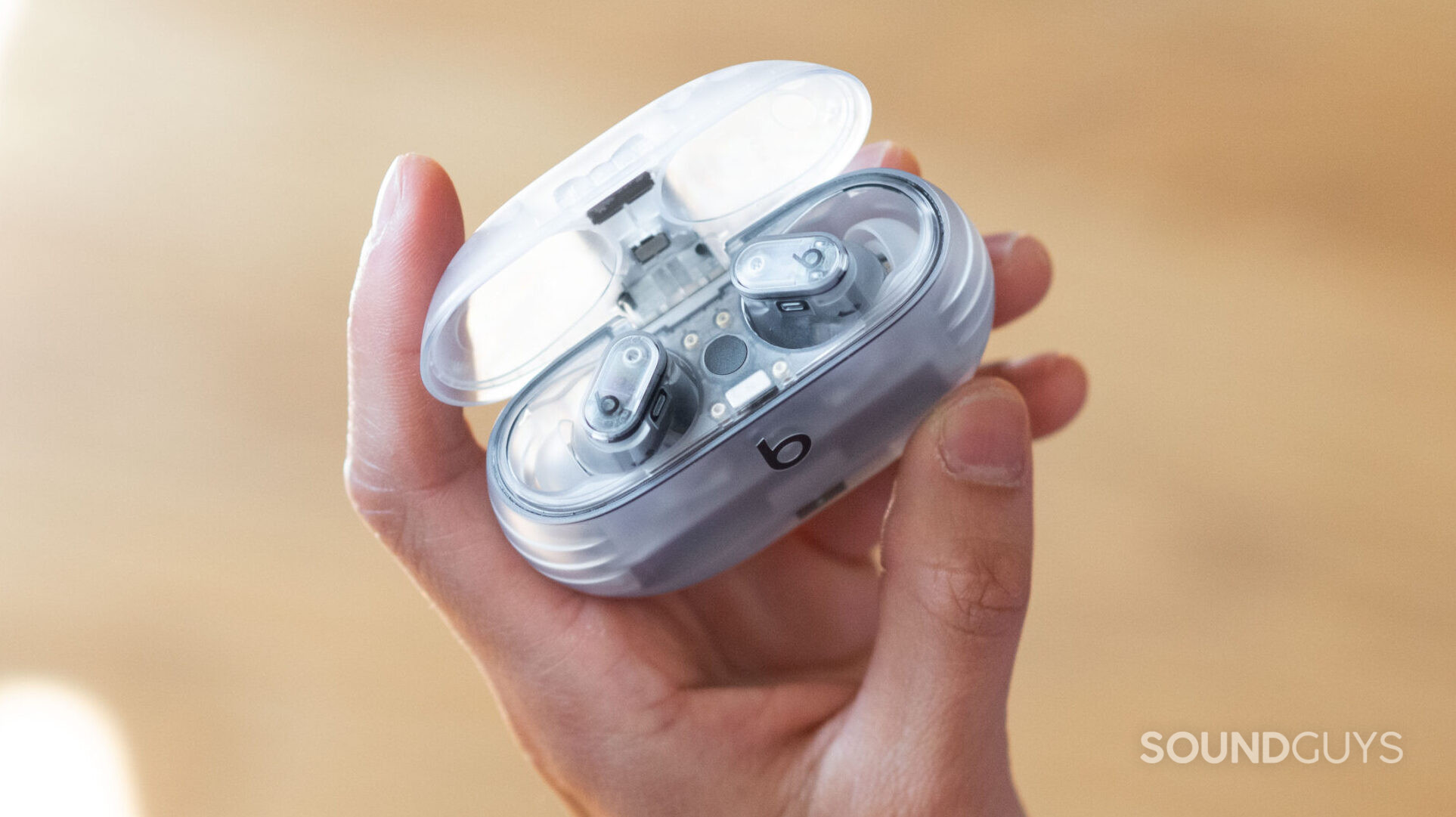
The Beats Studio Buds Plus is a good alternative to AirPods, particularly for users who switch between iOS and Android devices. Designed with Apple’s design ethos in mind, the Studio Buds Plus is a versatile option that works seamlessly with Apple products while also offering compatibility with Android through the Beats app. These earbuds boast solid active noise canceling (ANC), respectable battery life (up to 8 hours with ANC on), and a comfortable fit, thanks to a variety of ear tip options. However, they lack some premium features like wireless charging and customizable EQ settings.
While The AirPods Pro 2 still outshines these earbuds in terms of noise canceling and sound quality, the Beats Studio Buds Plus does have a couple of advantages over them, chief among them is power management. Not only does the Beats Studio Buds Plus’ quick charge gain you more listening time in only five minutes, but the battery life is far superior to the AirPods Pro 2.
Reasons to Buy:
- Cross-platform compatibility with both iOS and Android devices
- Solid battery life (up to 8 hours with ANC on)
- Comfortable fit with four ear tip options
- USB-C fast charging for convenience
- Decent ANC and Transparency modes for commuting and travel
Reasons Not to Buy:
- Lacks wireless charging and customizable EQ
- Physical control buttons can disrupt the earbud fit

Objective measurements
Loading chart ...
The characteristic of the “classic” Beats sound is a slight overemphasis on bass that’s made more stark by under-emphasizing mid frequencies. This will make your music sound like the lowest lows are overly loud compared to vocals and other instruments. The other main hallmark of the Beats sound is that sibilant sounds and cymbals will also get a bit of a boost over the relatively quieter mids. This will lead to the illusion of clearer-sounding instruments and easier-to-hear details like guitar string picking. However, it may not be your cup of tea, especially if you’re listening to vocal-heavy content, as this can boost certain mouth sounds.
Loading chart ...
Although the quality of your fit will determine how well any product can handle noise, we found that the Beats Studio Buds Plus cancels unwanted noise quite well under near-ideal conditions. Because the fit test guarantees a good seal, isolation is respectable on its own, even without the active noise cancelation. Being able to reduce the sound of the outside world by 20dB reliably means that most noise will sound less than 25% as loud as it would without the earbuds inserted.
As far as noise rejection goes, the Beats Studio Buds Plus tends to pick up everything going on around you, so be aware that these earphones may not be the best headset to use in an office or anywhere there are lots of ambient distractions.
Beats Studio Buds Plus microphone demo (Ideal conditions):
Don’t buy the Apple AirPods (2nd Gen)
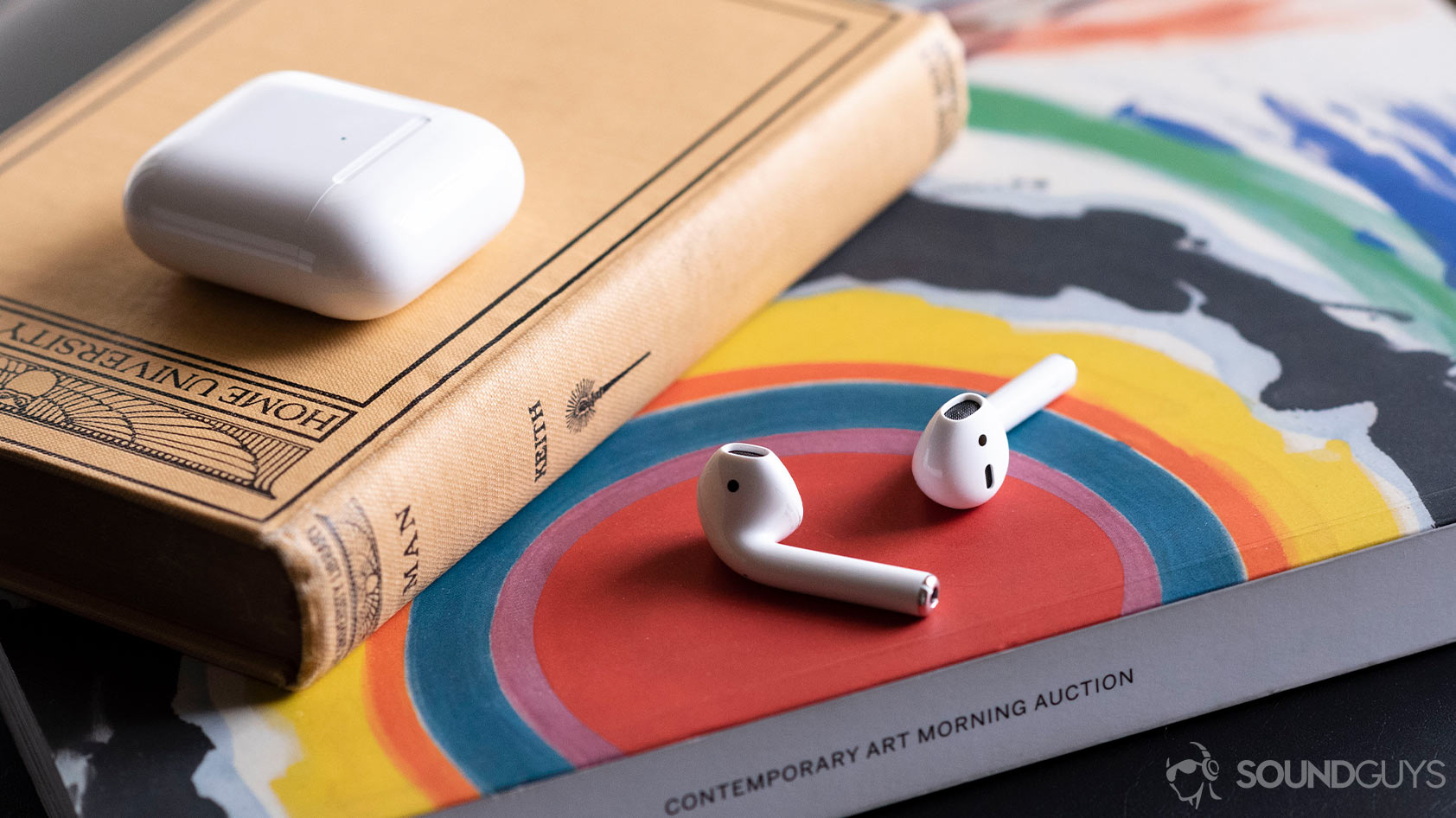
While the AirPods (2nd generation) may seem appealing due to their low price tag, they fall short in several key areas, especially when compared to other options on this list. One of the biggest drawbacks is their poor fit, which leads to terrible isolation. The open-ear design means that outside noise seeps in, making it difficult to enjoy your music unless you crank the volume up to uncomfortable levels. This lack of isolation also means that people around you will likely hear what you’re listening to, which can be frustrating in quieter environments.
Sound quality is another weak point. The AirPods (2nd Gen) suffer from under-emphasized bass and exaggerated mids, leading to an unbalanced sound profile that pales in comparison to other earbuds at the same price point. If the fit isn’t perfect, you can expect a significant drop in bass, making many tracks sound hollow and lacking in depth. Additionally, these earbuds are not waterproof, making them a poor choice for workouts or outdoor use in wet conditions.
For Android users, the experience is even worse. Connectivity issues, limited functionality, and reduced audio quality make the AirPods (2nd generation) a frustrating choice. With no noise canceling capabilities, no volume controls on the earbuds, and a dated design, there are simply better alternatives, such as the AirPods Pro or Beats Studio Buds Plus, which offer a much more refined experience for not much more money.
The best AirPods accessories
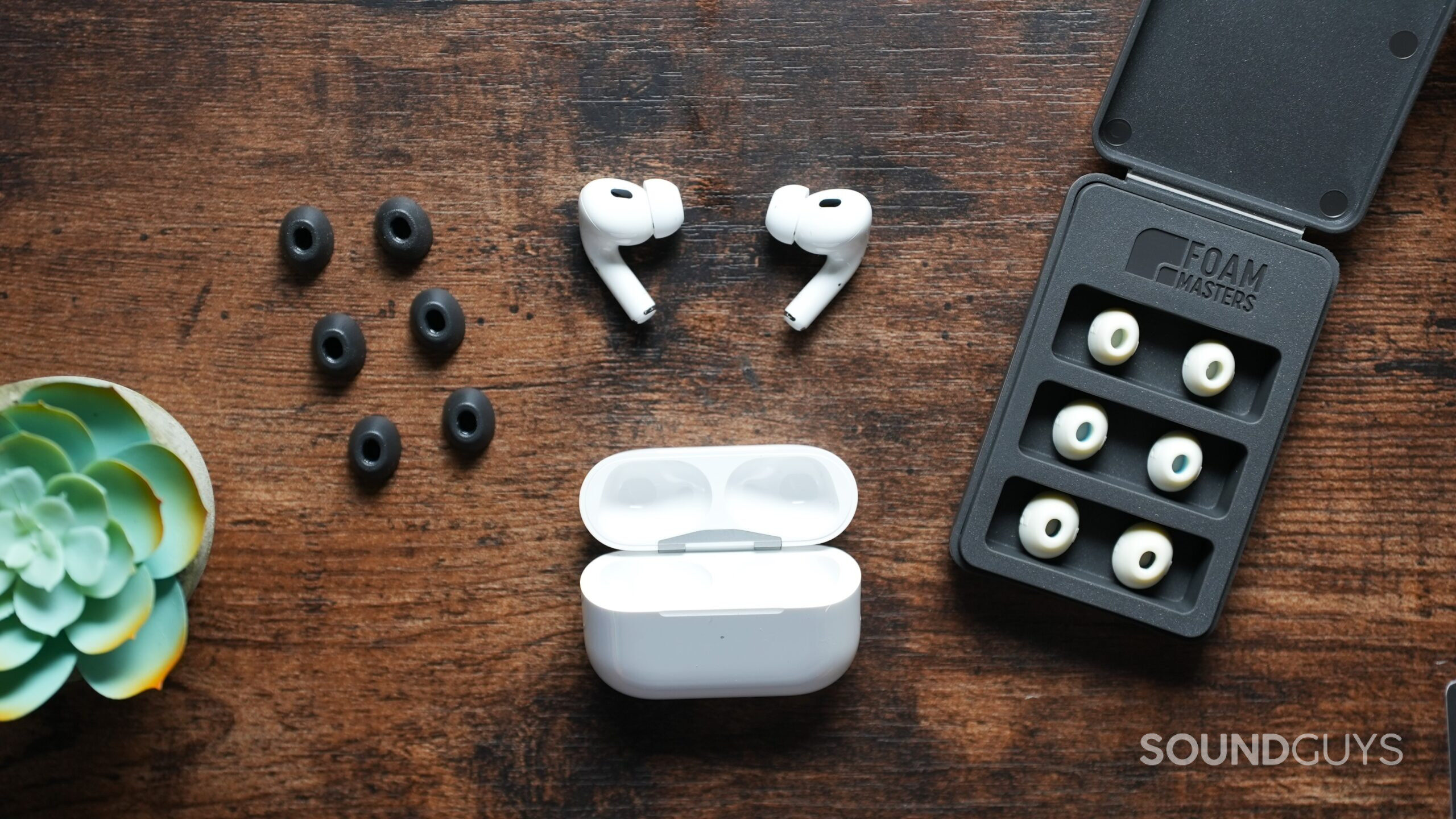
Here are a few of our favorite accessories, from comfy ear tips to carrying cases, to make your AirPods that much better.
- Foam Masters Memory Foam Ear Tips for AirPods Pro ($29.99 at Amazon): These memory foam ear tips are comfortable and durable and come in a nice case so you won’t lose them. They are very ergonomic and fit the shape of your ear canal to ensure the best seal.
- Catalyst Waterproof case ($29 at Amazon): If you need your AirPods Pro case to be able to survive anything, this case is IP67 water- and dust-resistant, MIL STD 810 drop proof, and comes with a carabiner too.
- AirPods Max Hard Carrying Case ($36 at Amazon): Apple’s included Smart Case is no match for the books, keys, and assortment of miscellaneous items in your bag, which is where the co2CREA Hard Carrying Case comes in. This zippered case is simple and durable, and it has ample room to store the headphones while sheathed in the proprietary Smart Case. You can even fit a power brick in the center of the case, below the headband.
- Anker PowerWave Wireless Charger ($12 at Amazon): Of all the Apple AirPods Pro accessories, this one may be the most versatile. Not only can it charge the AirPods Pro case, but it can charge any smartphone and any Qi-compatible device.
What you should know about AirPods
When considering AirPods, you’re stepping into Apple’s infamous “walled garden.” Apple’s ecosystem is designed to provide a seamless user experience across its devices, but this integration comes at a cost. Often referred to as the “Apple tax,” Apple products, including AirPods, are priced at a premium compared to alternatives. This upcharging isn’t always justified by performance; instead, much of the price goes towards brand recognition and the slick integration Apple is known for. However, you should weigh the convenience of AirPods against their limitations, especially if you use non-Apple devices.
Frequency Response
AirPods generally offer a consumer-friendly sound profile, with some models emphasizing bass or mids to appeal to casual listeners. However, their open-fit design can severely affect bass response, especially for users who struggle to get a good fit. If audio fidelity is your priority, you might find better options outside the Apple lineup.
Isolation/ANC
Active noise canceling (ANC) is a significant selling point for models like the AirPods Pro and AirPods Max. However, basic models like the standard AirPods (2nd and 3rd generation) suffer from poor isolation due to their open-ear design, letting in ambient noise and diminishing the listening experience. Keep this in mind if you’re often in noisy environments.
Durability
While AirPods have solid build quality, their lack of official waterproofing on non-Pro models can be a downside. Sweat and rain could shorten the lifespan of your earbuds, particularly if you use them during workouts. For more rugged use, consider models with an IP rating, such as the AirPods Pro or Beats Studio Buds Plus.
Software
Apple’s strength lies in its software, and AirPods leverage this with features like seamless pairing, “Hey Siri” voice commands, and automatic switching between Apple devices. However, these features are often exclusive to Apple’s ecosystem. Android users will miss out on most of these perks, making AirPods a less attractive option unless you’re fully invested in Apple’s devices.
Compatibility
AirPods work best with Apple devices, but compatibility with Android and Windows is limited. Features like spatial audio, transparency mode adjustments, and automatic device switching are exclusive to Apple’s ecosystem. If you’re looking for cross-platform functionality, there are better alternatives, such as the Beats Studio Buds Plus, which offers a more balanced experience across multiple devices.
Battery Life and Lifespan
AirPods, like all true wireless earbuds, suffer from limited battery life and a finite lifespan. Most AirPods will give you up to 5 to 6 hours of listening time per charge, but as with all lithium-ion batteries, this capacity will degrade over time. You can expect your AirPods to last about two to three years before the battery life becomes significantly diminished. Once the battery starts to degrade, replacing it isn’t a simple task, which often leaves you with little choice but to purchase a new pair—making AirPods a short-term investment at best.
How we test AirPods
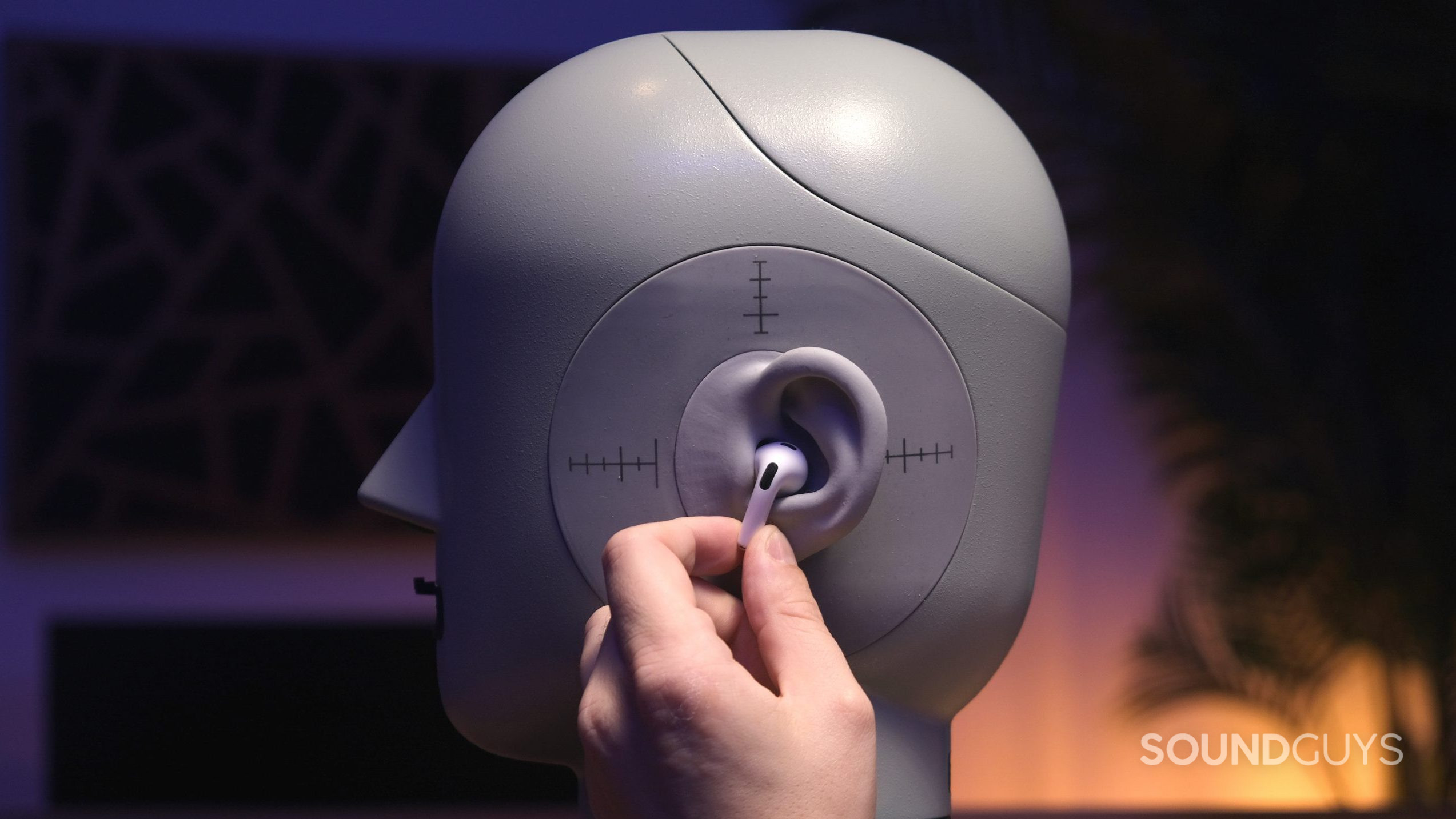
At SoundGuys, we take a rigorous approach to testing AirPods, just as we do with every audio product. We evaluate performance in real-world scenarios, testing features like Bluetooth stability, ANC effectiveness, and overall sound quality. Each product undergoes standardized tests to measure battery life, frequency response, and isolation.
You can read more about our detailed testing process here: How We Test
Additionally, we compare AirPods to other leading audio devices in the market to ensure a balanced perspective. We don’t just rely on technical specifications; we use AirPods in daily environments to assess how they perform under typical use cases. This method helps us determine whether they truly live up to the hype.
For more on why and how we test, check out Why We Test
How we choose the best AirPods
Our selection process for the best AirPods involves a blend of technical analysis and real-world experience. We consider several factors, such as audio quality, comfort, battery life, and how well the product integrates with Apple’s ecosystem. Our goal is to highlight AirPods that offer the best value, whether you’re an audiophile, a casual listener, or a devoted Apple user. We also take into account alternative models, ensuring you know where AirPods stand against the competition.
Why you should trust SoundGuys
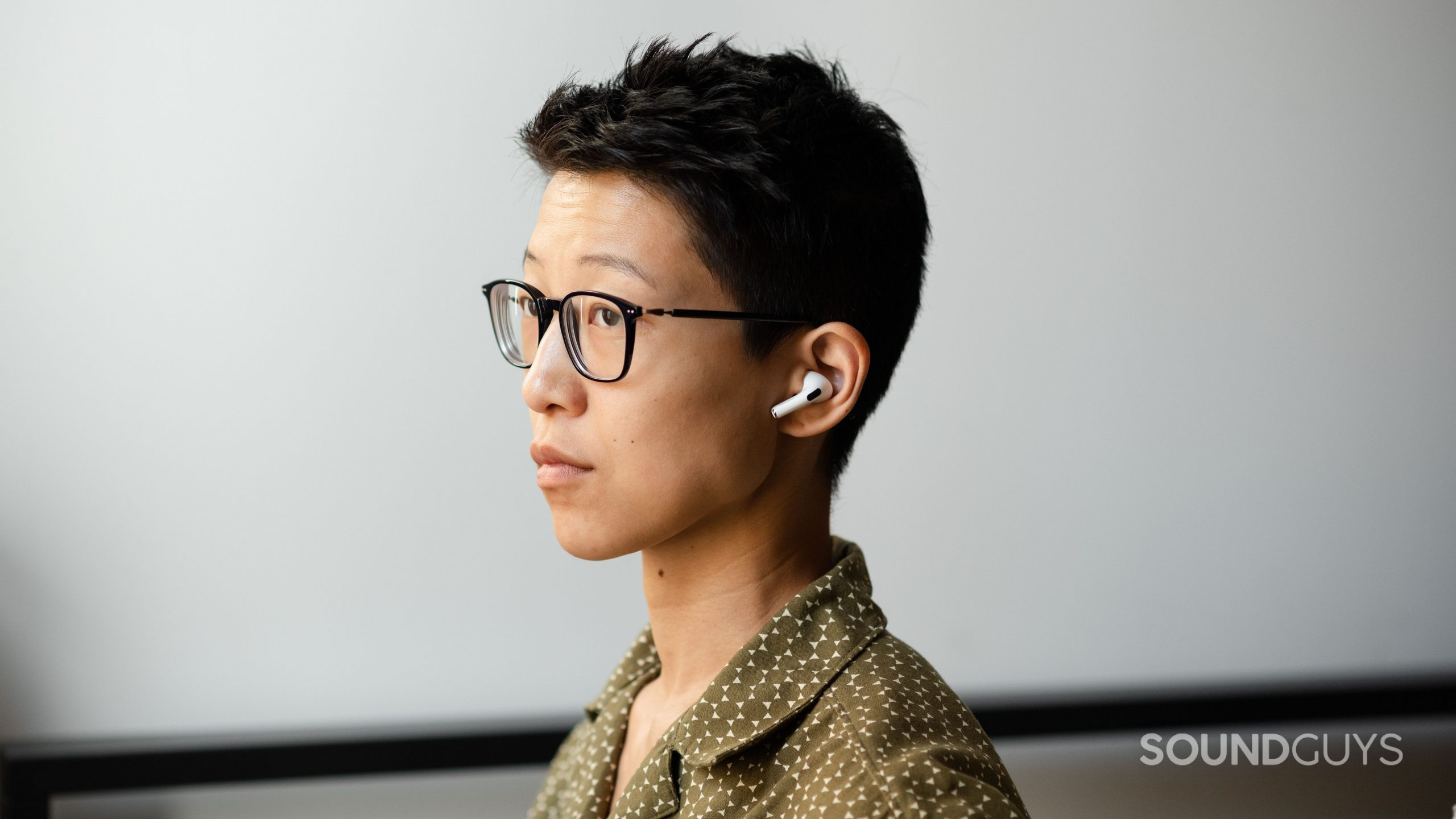
At SoundGuys, we are committed to providing unbiased and honest reviews. Our team is passionate about audio technology and thoroughly tests every product we review. We don’t accept payments for positive reviews, and we maintain full editorial independence. Our goal is to help you make informed decisions about the products you choose.
Learn more about our ethics policy here: SoundGuys Ethics
Frequently asked questions
The best AirPods overall are the AirPods Pro (2nd generation). They offer excellent active noise canceling, a comfortable fit, improved sound quality, and a seamless experience within the Apple ecosystem. For those who prefer over-ear headphones, the AirPods Max deliver top-tier ANC and great sound, though they come at a high price.
The AirPods (3rd generation) are better than the 2nd generation in almost every way. They offer improved sound quality, better battery life, spatial audio, and a more ergonomic design. However, they still lack active noise canceling, which is only available in the Pro models.
No, the AirPods (2nd generation) are not worth it in 2024. They lack modern features like active noise canceling, have poor isolation, and their sound quality is subpar compared to newer models. If you’re looking for affordable AirPods, the 3rd generation offers much better value.